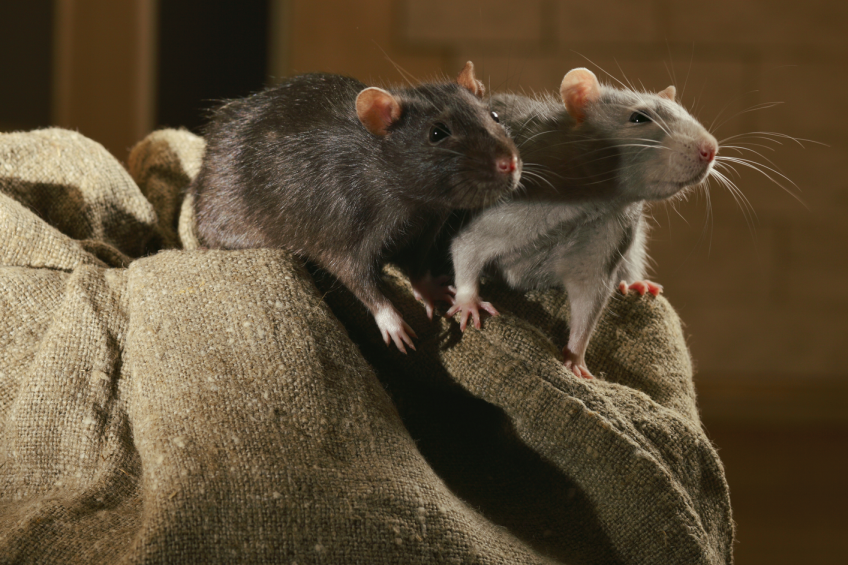Top tips for eliminating rodents on the poultry farm

Rodents are a severe source of contamination and hence are a serious threat to flock health, causing considerable economic loss. What measures are needed to eradicate rats and mice and keep them away from the poultry farm permanently?
By Tariq Jamil, DVM University of Veterinary and Animal Sciences, Lahore, Pakistan
Rodent proliferation is a common problem on rural poultry farms, especially in open houses and in the feed storage rooms. They are notorious for wasting feed and annoying animals. Feeding mostly on fruits and grains, these mammals have two incisors at the upper and lower jaw for gnawing.
Rodents have a high proliferation rate as they litter 6-7 times a year having 7-8 youngs per litter and reach sexual maturity in a short period of time i.e. 3-4 months. Moreover, they have a very short gestation period of almost four weeks. Mice have an even shorter gestation period of only 17-18 days.
Damage in the poultry house
Rats and mice cause major economic loss, due to feed consumption, equipment damage and annoying birds. Damaging electric wires may result in fire and damage to feed bags, resulting in feed wastage. Rats eat 10-20 kg feed per year and mice eat 1-1.5 kg feed per year/mouse.
As major farm expenses fall under the heading of feed, rodent proliferation can cause heavy economic losses if not controlled. Feed prices are also increasing steadily, so it becomes crucial to control rodent proliferation at the farm.
A threat to biosecurity
Rodents are also causing the spread of many diseases like Marek’s Disease, Salmonellosis, Pasteurella and Leptospirosis which compromises the biosecurity at farms. They also bring biological contamination of other farms as they go in search of food from farm to farm. Following indications, control and prevention strategies may help farmers in solving the problem.
How to identify the presence of a rodent population in a poultry house:
- Visual observance
Rodents can be seen often running along the walls after a long rest, especially at night. However their visual absence does not indicate that the farm is free from them. - Rodent sounds
Sounds produced during scratching, running and gnawing in groups can be heard easily by standing quietly in the farm or the storage room. - Faecal droppings
Fresh droppings are a good indicator of rodent infestation. Presence of moist and black pellets at feeding sites is highly indicative of their proliferation. - Running trails and marks
Rodents mostly use the same path for long periods. A clean, wavy track is formed due to their toe imprints and tail movements. These trails and run marks can be seen in storage rooms and in field tracts seldom used. - Gnawing and feeding remains
Rodents gnaw wooden pads and feed bags. Chewed particles are a good indication of rodent proliferation. - Nests and burrows
Rodents usually live in burrows that may have more than one entrance. Their burrows are usually found in the ground at the base of the buildings, trees and pavements in the field. Nests are usually found under the floors and inside the hollow shelters. Burrows and nests are good for determining current infestation of the rodents on farms.
Rat burrows are usually found in the ground at the base of buildings, trees and pavements.
Control rodents on a poultry farm
These measures can be taken to control rodents on farm:
- Snap traps
Traps are a good controlling tool. Placing a piece of bait is of course helpful for attracting rodents. These must be placed in the darker places of rodent runways. They should not be placed above the nest of the rodent, but rather at a distance of 1-2 meters away from the entrance. More than one mouse trap placed at a 2-4 meters interval are more beneficial. Mouse traps should be used from time to time for proper control. - Glue boards
Placing glue in the centre of a card-board and keeping it along the rodent runway tracks is also an effective method to control the rodent population. They stick and hold the rodents to them and they can be then disposed of properly. However, sometimes, other organisms such as lizards, frogs, etc. also get stuck to these boards. Glue boards are also ineffective where dust is common. - Rodenticides
These are mainly anticoagulants or acute poisons that result in internal bleeding and hence death. These may be multi dose or single dose and include warfarin, bromadiolone, zinc sulphate and cholecalciferol. However, these chemicals should be used with precautionary/local safety measures.
Traps are a good controlling tool and should be placed with bait in rodent runways.
Prevention of rodents on a poultry farm
Rodent proliferation can be prevented by proper garbage handling and separating out edible wastes from non-edible garbage. Dispose edible garbage in drums and do not dispose in the open. Other practices include the following:
- Burrow destruction
Destroy all the nests and harbourages where found in the near-by fields, trees and building bases. Proper grass trimming and decreasing the availability of water around buildings are good measures to prevent rodent proliferation. - Sealing holes
Rodents are also kept out by sealing holes in feed storage and mixing rooms. The drains and pipes should be screened with sieves. Concrete floors are also helpful for rodent prevention. - Door guards
At the entrance of the farm a cemented guard of around two feet (61 cm) from the ground with an outside curve is built in order to deter rodent climbing and entering the farm. This is a good way to avoid the entrance of rodents.
Join 31,000+ subscribers
Subscribe to our newsletter to stay updated about all the need-to-know content in the poultry sector, three times a week. Beheer
Beheer








 WP Admin
WP Admin  Bewerk bericht
Bewerk bericht